#atsuko asano
Text
I cannot find the post but a long while back i asked if people would be interested in me posting a No. 6 audiobook of sorts on youtube and i am here now to say that i have just read and posted Chapter 1! It's mostly a personal project and I'm very busy w college so I can't tell how regular the updates will be, but they will get out eventually :) u can go check it out if u would like
youtube
70 notes
·
View notes
Text

52 notes
·
View notes
Text
The first Samurai film I've ever watched that made me fell in love with Japan. 🌸
Heaven and Earth (1990)
#heaven and earth#ten to chi to#天と地と#uesugi kenshin#takaaki enoki#lady nami#atsuko asano#japanese drama#period drama#historical drama#jidaigeki#japanese movie#japan#cherry blossoms#sakura#spring in japan
16 notes
·
View notes
Photo
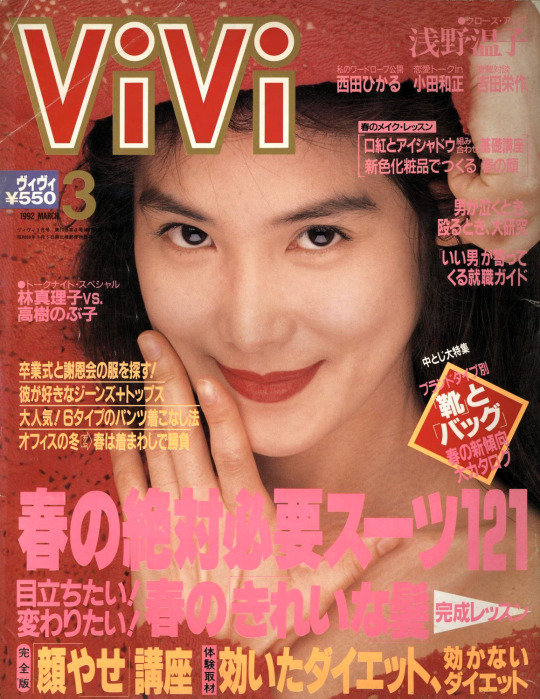
「ViVi」 1992
15 notes
·
View notes
Photo
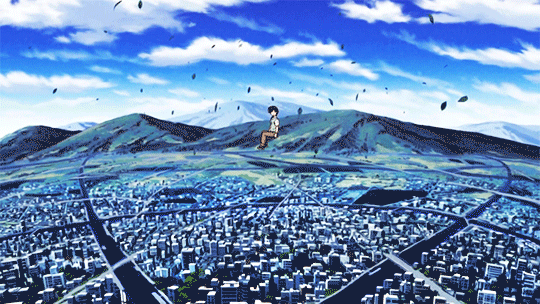

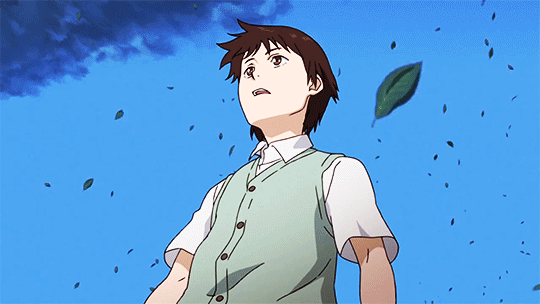
Shion | NO.6 by Atsuko Asano
49 notes
·
View notes
Quote
This is where my heart is. Proof... that I am human. I was human when he stole my heart, and human when I longed to stay by his side.
No.6
104 notes
·
View notes
Photo

The Geisha - Hideo Gosha 1983
71 notes
·
View notes
Photo

Battery Vol.10 (end)
10 notes
·
View notes
Text
No. 6 is a story about how absolutely horrible and evil and disgusting humans can be and how human nature can become this twisted grotesque thing that seeks only its own good and how life can become hell on earth when you're at the mercy of people who have no mercy in them but it's also a story about hope and love and fighting for what's right and how humans are still worth saving and life is still worth enjoying and clinging onto and about how human nature can also be a beautiful, raw, heartwrenchingly profound thing and it is so right in both cases
246 notes
·
View notes
Text
The Geisha (1983)
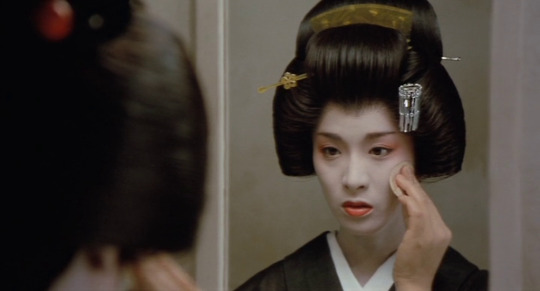





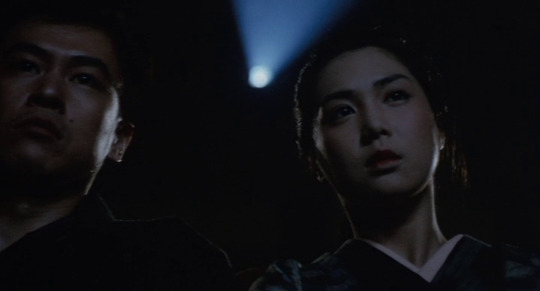
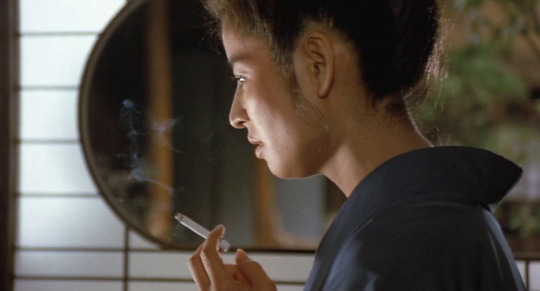
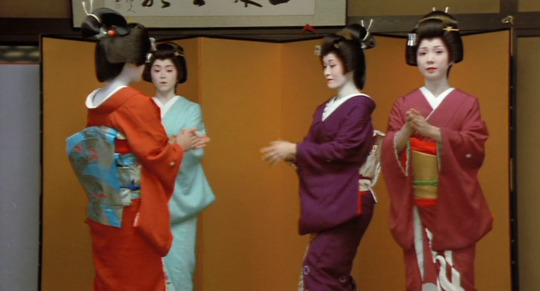
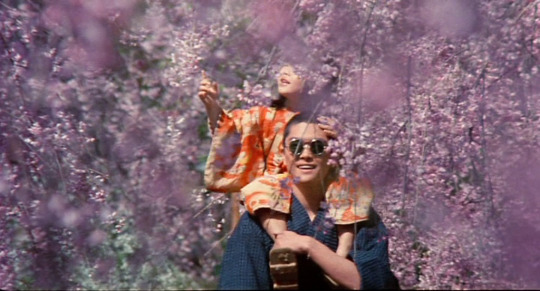
陽暉楼 The Geisha (1983)
directed by Hideo Gosha
cinematography by Fujio Morita
#陽暉楼#the geisha#hideo gosha#japanese cinema#japanese film#1980s#ken ogata#atsuko asano#kimiko ikegami#mitsuko baisho#stills
21 notes
·
View notes
Text

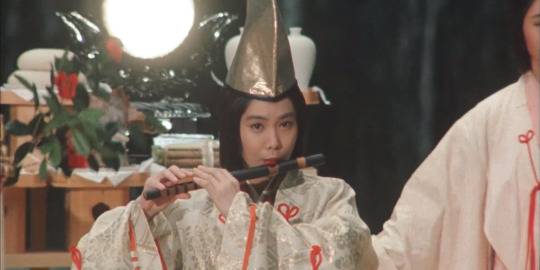


Heaven and Earth (1990)
I love how both Uesugi Kenshin and Takeda Shingen have love interests that reflect their lifestyles and personalities.
Uesugi Kenshin is a reserved person who enjoys reading, and is attracted to Nami who enjoys playing the flute.
Takeda Shingen is an ambitious person who enjoys going to battle, and is attracted to Yae who enjoys fighting as well.
#heaven and earth#ten to chi to#天と地と#uesugi kenshin#takaaki enoki#lady nami#atsuko asano#takeda shingen#masahiko tsugawa#lady yae#naomi zaizen#japanese drama#period drama#historical drama#jidaigeki#japanese movie#japan#samurai
14 notes
·
View notes
Text

Two boys having dancing lessons in a dystopian world
Plus, a quote I love from the novel: “This is where my heart is. I was human when my heart was stolen by him, and I was human when I longed to be by his side. And this fact won't change, no matter what name I give to these feelings”.
#nezushi#nezumi#Shion#nezumi x shion#no. 6#no.6#no. 6 nezumi#no. 6 shion#no. 6 fanart#fanart#anime fanart#atsuko asano#digital art#art#colored art#my art#pride month#they’re in love your honor#canon ship
24 notes
·
View notes
Text
“Stories will not develop or be born from anyone who says, "Well, that's just how it is" with a skewed and pessimistic outlook; nor does it come from those who have thrown everything away, saying, "I don't care what happens anymore". Only those who squint at that tiny ray of light, and take that hesitant half-step forward―only from that half-step is a story born."
-Atsuko Asano.
8 notes
·
View notes
Note
Hey i wanted to ask if you have interviews of asano atsuko about her works or her writting anything really i am not just asking about no.6 i am curious about her and her views in general
Yes, we have one interview in our #atsuko asano, and you can also find another one from the no. 6 guide here: https://listenforthelove.tumblr.com/post/80685105840/atsuko-asano-interview-no-6-complete-guide (translated by @listenforthelove).
There may be more available online on other sites or blogs relating to her other works, such as Battery (she's actually a very prolific writer!). However, these two interviews are the only ones that I personally know of. If anyone else has info about any more interviews by Asano-san, please comment!
~Vox
13 notes
·
View notes
Quote
Shion, your name always gets me involved in some kind of conflict. I hope you're aware of that.
No.6 Beyond
8 notes
·
View notes
Text
The Muses of 1980s JJ
JJ and the Rise of the Akamoji-kei

In the early 1980s, the most glitzy clubs, restaurants, and boutiques were taken over by "JJ girls," and JJ's influence was palpable.
During this period, the magazine shifted away from relying on haafu models and instead featured full-Japanese women as its primary models. This shift represented a move from exotic beauty to models who resembled the average reader more closely. Many of these models were also active college students attending prestigious institutions.
The first JJ muse of that period was 20-year-old Ryoko Takahashi, who replaced Marie Krabin as the cover model in 1981. Takahashi possessed a refined and classic look that seamlessly complemented the "newtra" fashion style heavily promoted by the magazine.
She got married and retired when she was still in her 20s. After a long hiatus, she returned in the mid-2000s to Kobunsha fashion titles targeted at women in their 40s and 50s. She now goes by the name Ryoko Tamai.

21-years-old Chikako Kaku took over as JJ's cover girl in 1982. That same year, she made her debut as an actress in an afternoon drama. From a traditional wealthy family, she graduated from the Joshibi University of Arts and Sciences Junior College.
Although her tenure as the primary model lasted only a year, Chikako made a return as a cover girl for three issues in 1985 and also appeared several other times to promote her acting projects. Remarkably, at the age of 60, she continues to be active in the entertainment industry, maintaining her roles as both an actress and a model.
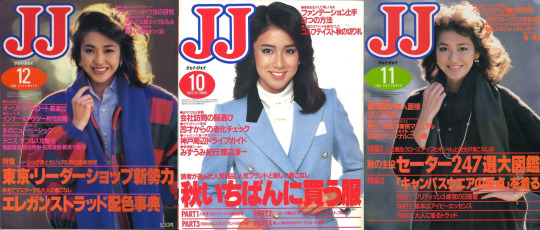
Chieko Kuroda, known as Chieko Kashimoto at the time, stands out as perhaps the most prominent JJ model of the 1980s. While most models typically held the position of cover girl for about a year, she maintained her role for over two years.
Chieko made her debut in the magazine while still a student at Seijo Junior College. Initially, she was discovered by the editor in charge of the sports fashion section, and her appearances were primarily confined to the sports pages. However, readers quickly grew fond of her, and her presence in the magazine expanded. Ultimately, in 1983, she was appointed as JJ's cover girl. Her rise to prominence paralleled the ascent of the editor who had initially spotted her, and he eventually became the editor-in-chief.
At the age of 24, Chieko retired from modeling and pursued a conventional career. She got married at 28, and the following year, she welcomed her daughter into the world.
In 1995, a decade after her departure from modeling, Kobunsha decided to launch a groundbreaking fashion publication, the first one aimed at married women in their 30s. The former JJ editor-in-chief who had originally discovered her invited Chieko to lead this innovative project. She accepted the offer and came out of retirement. The magazine, VERY, achieved tremendous success, reestablishing Chieko as a fashion influencer for women in her age group.
As of 2022, she continues to be actively involved in the entertainment industry, working as a model, actress, and TV personality.

In 1985, Towako Kimijima, then known as Towako Yoshikawa, became the new "signboard model" for JJ.
Similar to her predecessors at JJ, Towako received her education in prestigious institutions. Her journey into the world of modeling began during her junior high school years, where she appeared in influential teen publications like MC Sister and Seventeen. At the age of 19, she was appointed as the star model for JJ. Towako concluded her tenure with the magazine in 1987, and the subsequent year marked her debut as an actress.
Following her JJ graduation, she had an eventful career marked by a lot of family drama.
In 1995, she publicly announced her marriage to dermatologist Akira Kimijima, who happened to be the son of the renowned fashion designer Ichiro Kimijima. Although initially planning to retire from the entertainment industry after their lavish wedding, their union instead opened the doors to a series of family dramas that drew intense media scrutiny. Akira, raised by his grandmother as an out-of-wedlock child, found himself entangled in conflicts with his siblings over their roles in the Ichiro fashion empire. Tragically, Ichiro Kimijima passed away from a heart attack in 1996, further intensifying the feud. Eventually, Akira assumed control of his father's empire, though it was laden with substantial debt.
Towako's personal charisma proved to be the savior of the family's fortunes. Her striking beauty and impeccable style allowed her to successfully establish herself as a leader in the beauty and fashion industry for women. Her cosmetics and skincare line enjoyed remarkable success, solidifying her position as an authoritative figure on aging gracefully and embracing girly, "conservative" fashion. What made Towako particularly groundbreaking was her ability to maintain popularity among women in their 20s, despite the ageist nature of Japanese society, while she herself was in her late 30s.
Now in her late 50s, Towako is a mother to two adult daughters. Her cosmetics and skincare line continues to thrive and is distributed through her husband's company.
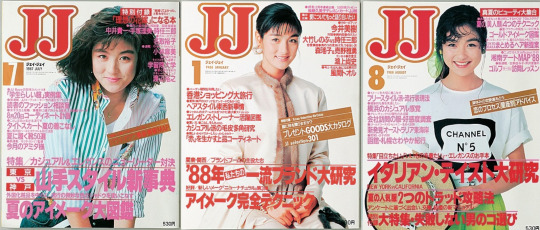
Analyzing the history of JJ cover models reveals a significant cultural shift between the 1970s and the 1980s. Interestingly, every cover muse from the 1970s has long since retired from public life, with limited information available about their activities after leaving the magazine. During that era, the "shelf life" of a young model was quite brief, and societal expectations often pushed women to marry at a young age and leave their careers behind. Even Momoe Yamaguchi, a top idol and pop star of the 1970s, chose to retire at the height of her career in 1980 to fully dedicate herself to married life.
In stark contrast, nearly all of the 1980s stars who graced JJ's covers remain active in various fields. While a few, such as Reiko Tatami and Chieko Kuroda, briefly retired, both eventually returned to modeling once their children had grown up.
However, some of JJ's stars from the 1980s have chosen to maintain a degree of anonymity in their post-modeling lives. This is particularly true for Kae Miyadai, JJ's "super dokumo" from the early 1980s. Miyadai is the first and only "dokumo" to ever grace the magazine cover, which she did 3 times between 1987 and 1988. Since then, however, very little is known about her.

Risako Miura, formerly known as Risako Shitara, held the distinction of being the last JJ signboard model of the 1980s. Her modeling journey began in 1987, and she maintained her status as the magazine's top model until 1991, marking the longest tenure during that era. Interestingly, she appeared on the magazine's cover relatively few times, with just seven covers to her name. This was because her tenure coincided with a period when actresses and celebrities were prominently featured on the front covers.
Risako left a lasting impression on JJ's readership. Born in New York City and the daughter of a Mitsubishi director, she completed her education at Tamagawa University. In addition to her modeling career, she ventured into acting in the early '90s. In 1993, she married the renowned soccer star Kazuyoshi Miura in a lavish ceremony attended by numerous celebrities.
Following her marriage, Risako devoted herself to family life for a few years. However, in 2000, she stepped into the role of the main star for VERY Magazine, succeeding Chieko Kuroda, and continued in this capacity for six years. Since then, she has occasionally returned to modeling and remains active on social media platforms..
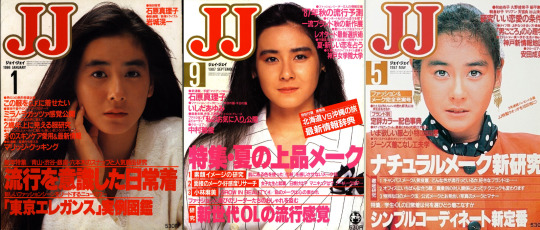
Mariko Ishihara played a pivotal role in the evolving landscape of JJ magazine when actresses and young celebrities began dominating the magazine's covers. During the period spanning 1986 to 1987, she held the distinction of being the magazine's primary muse, gracing its cover on six separate occasions.
Ishihara's most distinctive feature was her thick eyebrows. In the late '70s, Brooke Shields, known for her appearances in commercials for cosmetic company Kanebo and others, gained immense popularity in Japan. Her signature unruly brows were an integral part of her appeal. Mariko Ishihara demonstrated that this striking look could also work on Japanese women, significantly influencing beauty standards of the era.
She is also widely remembered by her role in the TV drama "Fuzuroi no Ringotachi," which revolved around a group of college students navigating the complexities of love. As an actress, Ishihara projected an image of innocence combined with a wild and unpredictable streak. Over time, her untamed personality began to overshadow her acting career, and in recent decades, she has become more recognized for her involvement in media scandals. Nonetheless, her legacy as a fashion and beauty icon from her past remains indelible.

In the summer of 1988, Fuji TV aired a drama called "Dakishimetai." The show style gained the moniker of "trendy drama" because everything in it was very trendy: the settings, the actors, and the outfits. It really captured the glamour of the bubble years of Japan. And it was a success, especially among young women, turning the show's lead actresses -- Yuko Asano and Atsuko Asano (who, despite the same last name, are not related) -- into the most prominent fashion influencers in the country.
Fueled by the "W Asano" boom, Atsuko and Yuko became cover girls of all akamoji titles between 1988 and 1990. And JJ was no exception. Atsuko graced JJ's cover 5 times, while Yuko (center) amassed 4 front covers, giving "W Asano" a total of 9 covers between 1989 and 1990.
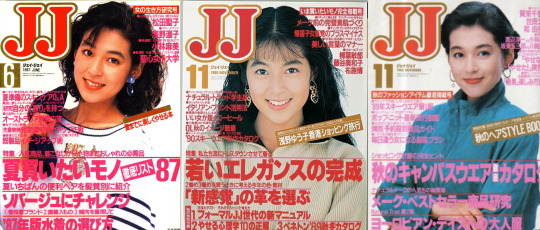
Honami Suzuki is the actress with the most JJ covers, gracing the front of the magazine on a remarkable 10 occasions spanning from 1987 to 1992.
Her first appearance was in the June 1987 issue, shortly after she debuted as an actress. Throughout her ascent, she kept being featured in the magazine. Honami finally reached mega-stardom in 1991 when she starred in "Tokyo Love Story," one of the most popular TV dramas of all time. At the peak of her popularity, she retributed the magazine support during her ascent, appearing 3 times on the cover. Her last appearance was in the October 1992 issue.
In the subsequent year, JJ departed from featuring celebrities and returned to showcasing their signboard models as cover girls starting from 1993.
#jj#1980s#magazines#akamoji-kei#akamoji#w asano#yuko asano#atsuko asano#honami suzuki#marie ishihara#risako miura#towako kimijima#chieko kuroda#chikako kaku#mariko ishihara
4 notes
·
View notes